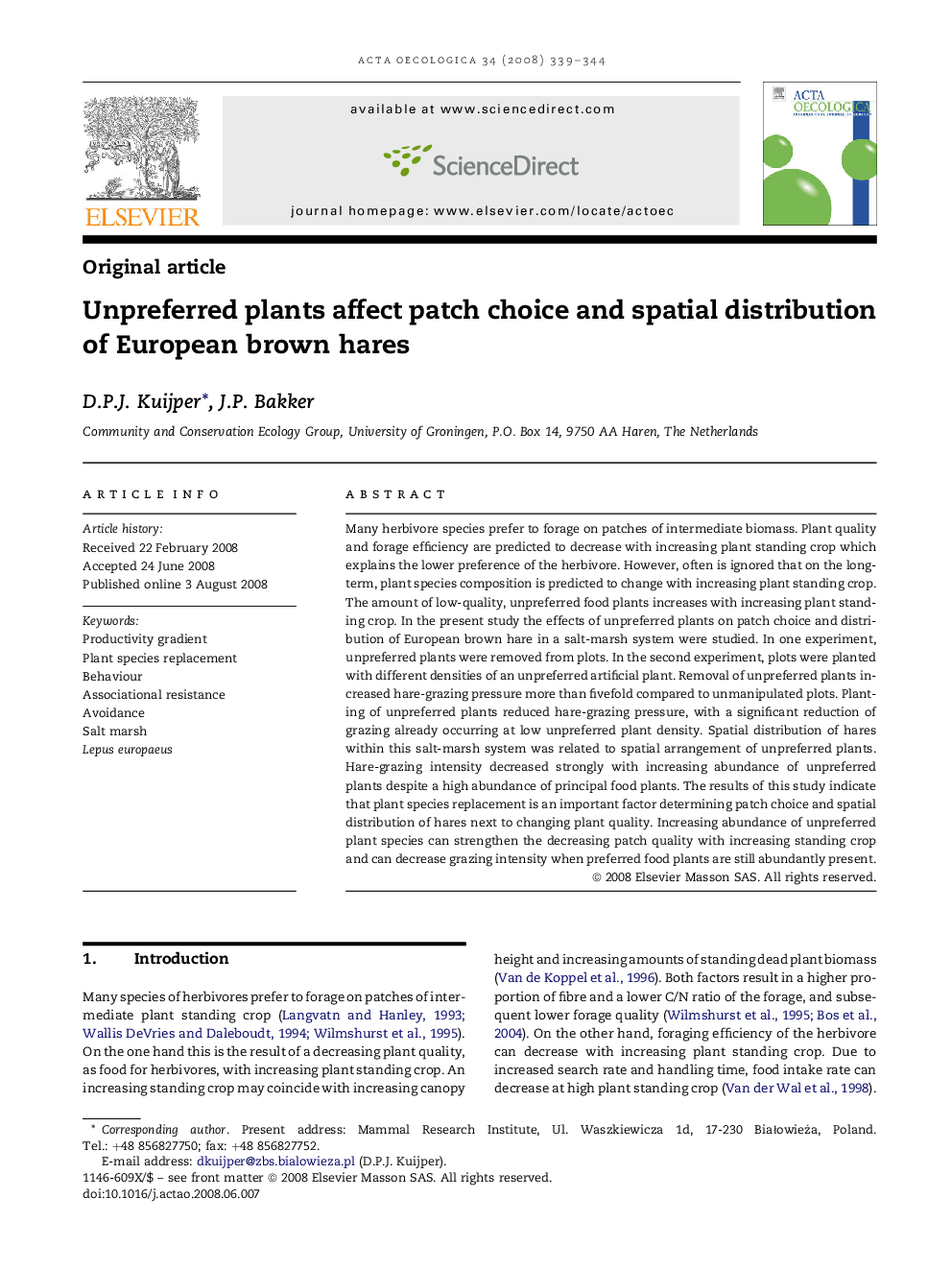| Article ID | Journal | Published Year | Pages | File Type |
|---|---|---|---|---|
| 4381491 | Acta Oecologica | 2008 | 6 Pages |
Many herbivore species prefer to forage on patches of intermediate biomass. Plant quality and forage efficiency are predicted to decrease with increasing plant standing crop which explains the lower preference of the herbivore. However, often is ignored that on the long-term, plant species composition is predicted to change with increasing plant standing crop. The amount of low-quality, unpreferred food plants increases with increasing plant standing crop. In the present study the effects of unpreferred plants on patch choice and distribution of European brown hare in a salt-marsh system were studied. In one experiment, unpreferred plants were removed from plots. In the second experiment, plots were planted with different densities of an unpreferred artificial plant. Removal of unpreferred plants increased hare-grazing pressure more than fivefold compared to unmanipulated plots. Planting of unpreferred plants reduced hare-grazing pressure, with a significant reduction of grazing already occurring at low unpreferred plant density. Spatial distribution of hares within this salt-marsh system was related to spatial arrangement of unpreferred plants. Hare-grazing intensity decreased strongly with increasing abundance of unpreferred plants despite a high abundance of principal food plants. The results of this study indicate that plant species replacement is an important factor determining patch choice and spatial distribution of hares next to changing plant quality. Increasing abundance of unpreferred plant species can strengthen the decreasing patch quality with increasing standing crop and can decrease grazing intensity when preferred food plants are still abundantly present.
